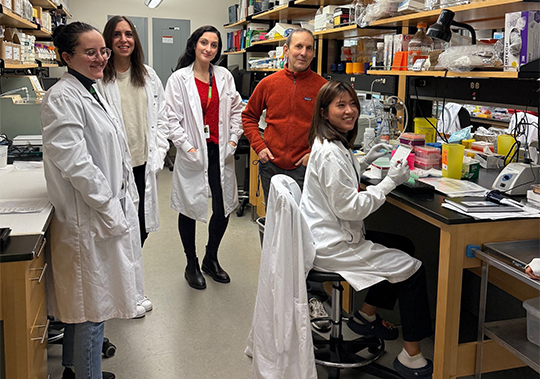Turning Lab Breakthroughs into Medicine: The 1 in 10,000 Challenge in Science

Scientists have a one in 10,000 chance of their research going from lab to drug, according to Dr. Daniel Drucker, the Canadian endocrinologist whose research into glucagon-like peptides led to the development of drugs like Ozempic and Wegovy.
Those are the same odds as a young hockey player turning pro or a writer making it onto the best seller list. In other words, you are more likely to run a marathon, if you train properly, than a scientist’s research will result in an approved drug. So, imagine Dr. Drucker’s excitement when he realized his research not only contributed to developing Ozempic but that it may lead to the development of drugs for different diseases in other parts of the body.
Dr. Drucker’s current CIHR grant is funding his team to look at how glucagon-like peptides, such as GLP-1, control heart disease and liver disease. “I am not prone to hyperbole,” he says, “but I think the clinical utility of these (GLP-1) medicines has really surpassed everyone's expectations, and a lot of the really interesting things we're seeing in people today which are largely beneficial, were predicted by basic science discoveries in the lab and by a decade or more of clinical trials.”
Dr. Drucker started working on an insulin stimulating hormone that might be useful for type 2 diabetes back in 1984. Twelve years later, through studies supported by CIHR, he published the first findings that GLP-1 reduces food intake by interacting with the brain to supress appetite and signal fullness. In 2014, the first GLP-1 medicine was approved for the treatment of obesity. Since then, Dr. Drucker has identified numerous other applications for GLP-1 that benefit different parts of the body.
Drucker’s lab has performed studies that showed that if a mouse had a heart attack, GLP-1 could reduce the size of the heart attack and help improve the mouse’s health. “In animal studies that we've done,” Drucker says, “we demonstrated that GLP-1 protects the heart and reduces atherosclerosis and protects the kidney and improves the health of the liver.”
In November 2024, a GLP-1 receptor agonist, a medication that mimics the action of the GLP-1 hormone, was approved by Health Canada for cardiovascular disease in overweight people. GLP-1 receptor agonists have also shown positive results for sleep apnea and addiction. Studies are ongoing to examine the impact in cancer, Alzheimer’s and Parkinson’s because of their potential to lower local and systemic inflammation within the body.
Dr. Drucker did not make any money from Ozempic or Wegovy, the drugs his research helped develop, but he still considers his research a resounding success. “The success of research,” says Drucker, “is asking really good questions and then designing really good experiments that will give definitive rigorous answers.” Dr. Drucker goes on to say that understanding how things work, which is what he and his team do in the lab, makes the next generation of drugs better or informs physicians on how to use existing medications in a wiser, more informed way.
At a glance
Issue
30% of people living in Canada have diabetes or prediabetes meaning their blood sugar is too high. Having too much glucose in your blood can cause other health problems such as heart and kidney disease.
As of 2023, 1 in 3 Canadians live with obesity. Obesity is a leading cause of type 2 diabetes, heart disease, stroke, fatty liver disease, kidney disease, arthritis, and cancer.
Research
Dr. Daniel Drucker and his team at the Lunenfeld-Tanenbaum Research Institute in Toronto, are studying how glucagon-like peptide-1 (GLP-1), a hormone that helps regulate blood sugar levels and other biological functions, reduces inflammation and improves the health of blood vessels, the liver, and kidneys. All these organs are impacted by type 2 diabetes and obesity.
For his breakthrough research on GLP-1, Dr. Drucker received the Canada Gairdner International Award in 2021, the Wolf Prize in Medicine in 2023, was named one of Time Magazine’s 100 Most influential People in 2024, and won the Breakthrough Prize in Life Sciences in 2025.
- Date modified: